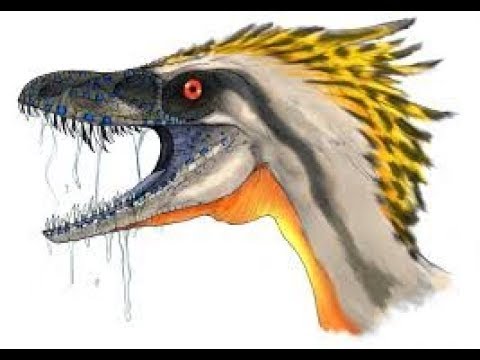Sinornithosaurus – Potentially Poisonous Raptor
Table of Contents
Based on new research, paleontologists now believe that a small feathered raptor called Sinornithosaurus may have very well be poisonous.
When it comes to dinosaurs, the word “raptor” brings many terrifying images to mind, mainly because of the Velociraptors in the movie Jurassic Park. Between the notorious sickle talons, the supposed cunning intellect, and the massive array of teeth, the Dromaeosaurs (raptors), in all their diversity, are already a frightful and terrific prospect. A collaboration of researchers, however, has now brought a new element to the equation: poison.

Scientists at the University of Kansas, working closely with Chinese colleagues, have recently arrived at the conclusion that a turkey-sized Dromaeosaur called Sinornithosaurus was likely venomous. The team of scientists bases their hypothesis on certain cranial characteristics that are similar to modern poisonous reptiles.
What is Sinornithosaurus?
Sinornithosaurus (Chinese Bird Lizard) is a small, bird-like raptor that is closely related to the notorious Velociraptor. Two species of Sinornithosaurus have been presently identified in the forests of China: S. millenii (Millennium Chinese bird-lizard) and S. haoiana (Hao’s Chinese bird-lizard).
These small raptors were much smaller in size than Velociraptor, and what makes them exciting to researchers is that in all well-preserved specimens, feather imprints can be seen. This makes them one species in the growing collection of feathered, non-avian dinosaurs.
Based on their size and other physical characteristics, Sinornithosaurus was likely built to prey on birds and small dinosaurs. The raptor is closely related to another small Dromaeosaur called Microraptor, which has four “wings,” feathers, and is thought to have glided through the foliage in which it lived. If the same can be said for Sinornithosaurus, then the little raptor may very well have been a gliding predator.
Discovering the Poison in Sinornithosaurus
“We think it’s going to make a big splash,” said Larry Martin in the official University of Kansas release. Martin is a professor at the University of Kansas and the curator of vertebrate paleontology at the Natural History Museum and Biodiversity Institute. The “splash” he was referring to was the team’s discovery of certain facial depressions that very likely housed soft-tissue. These depressions, the researchers argue, are ideal seats for venom glands, and based on the discovery of yet another depression underneath the creature’s top row of teeth, Sinornithosaurus was likely designed for venomous predation. Martin noted
“When we were looking at Sinornithosaurus, we realized that its teeth were unusual, and then we began to look at the whole structure of the teeth and jaw, and at that point, we realized it was similar to modern-day snakes,”
The snakes he refers to are rear-fanged snakes, as opposed to the front-fanged pit vipers. These raptors were more similar to the venomous colubrids, like the coral snake or the cobra. In these snakes, their teeth do not serve to inject venom, but rather channel it from the venom sacs (which do not protrude outward as obviously as in pit vipers).
Martin and his colleagues are excited by this discovery and have hypothesized that this small raptor would have been a sight to behold. They paint a picture of this predator swooping down from low-hanging prehistoric tree branches, sinking its teeth into the birds and small dinosaurs it likely preyed upon. The venom, they suggest, probably stunned the victims of the attack into paralysis, assuring the creature would be alive while being consumed.
From this point, Martin et al plan to look to the Sinornithosaurus relatives, Microraptors, to see if there are any similar venom-delivery systems in place.
Resource: University of Kansas (2009, December 22). Poisonous prehistoric ‘raptor’ discovered in China.
